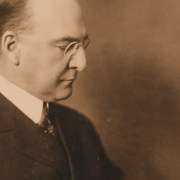A Brief History of Circuit Breakers
There have been moments in my fifteen years studying financial regulation that have seemed arcane, even irrelevant. Not yesterday. When the S&P fell seven percent in the first few minutes of trading, I knew what would come next, and why.
Yesterday was nothing compared to October 19, 1987 when the Dow plunged more than 22 percent. To avoid a repeat, regulators proposed pausing all trading after specific point drops, allowing markets to recover. SEC official Rick Ketchum implemented these market-wide “circuit breakers,” in 1989. “I’m glad they haven’t been used very much,” Ketchum told me in 2008.
When first activated in 1989 the circuit breakers were based on points. By the time they kicked in again in 1997 they were calibrated to a percentage of the market—the first circuit broke after ten percent drop. But the breaker failed in the spectacular May 2010 “Flash Crash” when the market dove (in mere minutes) by about nine percent.
So the SEC adjusted the machinery for the era of lightning-fast trading, with regulators like James Brigagliano concerned about volatility in both directions. “Limit up/limit down prevents executions beyond the market band,” Brigagliano told me a year after its 2013 implementation, “it’s designed to prevent trades at absurd prices.” The first band was set at seven percent of the S&P 500. Yesterday the market dropped below that, trading stopped for 15 minutes, and the market recovered. The circuit breaker worked.
For more on this and other topics related to financial regulation visit the SEC Historical Society Virtual Museum and Archive at http://www.sechistorical.org/

 Public
Public




